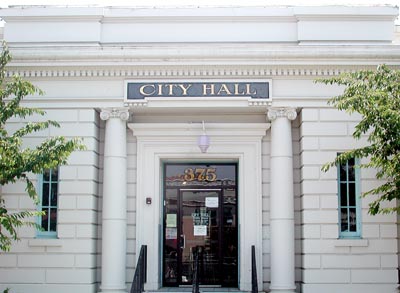Council members have a chance tonight to show their priorities aren’t as mixed up as Hollister Redevelopment Agency officials proposing to use $5 million in taxpayers’ money to rebuild the downtown fire station.
Council members should nix the proposal because there are other, more essential uses for the funds that should take priority, particularly in treacherous times.
These are the types of realities that should be top of mind for city officials when deciding where they spend every dime, and especially such large sums:
– The national recession has taken a bad economic situation in Hollister and made it worse.
– San Benito County’s unemployment rate surpassed 14 percent in May.
– That same month, the number of new foreclosure cases in San Benito spiked by 49 percent.
– All the while, some local businesses are struggling to keep the lights on and hoping, some praying, for a turnaround.
– In the meantime, council members can look at their own budget projections. Hollister is going broke while taxes have continued increasing for citizens. The general fund reserve in place to cover deficits has plunged and would be completely depleted in less than two years, even with the Measure T tax infusion, if habits don’t change.
That’s an alarm bell. It doesn’t mean the city should build a new one.
If council members consider themselves the least bit prudent, this clearly is not the best use of a significant dollar amount, which might go a long way toward turning around the city’s economy, and budget outlook, if used appropriately.
Spending $5 million on a fire station reconstruction makes no sense in the current climate considering, for one reason, there are roads throughout Hollister that have needed major repairs for many years. Fixing many of the city’s main thoroughfares and side streets would provide a direct, immediate benefit to citizens’ quality of life and the local economy.
Hollister development services Director William Avera, asked where the station reconstruction fits on the RDA’s priority list compared with other potential uses, noted how it’s a necessary project because there are structural deficiencies and the building was not constructed as a fire house – that it was built as a tractor repair shop.
For all these years, however, firefighters have gotten by in the old tractor shop. They have dealt with the water leaks and other discomforts of their workplace.
Eventually rebuilding the downtown station might be a worthy ambition, but council members have to ask whether the timing is right, whether the city should continue putting off more pressing priorities – such as road work and projects to spur economic development outlined in the RDA-supported downtown strategy plan – or whether the reconstruction can wait.
And the simple answer is, it can.
Avera deflected the notion of using substantial funds to continue RDA-supported road improvements – he underscored how the agency had spent $7 million on street repairs in recent years – by stressing that such projects are not in line with the RDA’s two chief functions.
Those two major priorities for redevelopment agencies throughout California are to reduce blight while boosting the economy and to support affordable housing endeavors. Rebuilding a fire station with years of functionality left in the tank, especially in the same location, does neither. RDA and fire officials would have a better argument – though still misdirected – if the proposal stood to largely reduce response times. But it doesn’t.
As an organization’s financial outlook changes, its business model has to change with it. Priorities have to adjust. Necessities have to come first. Designations and habits must take a back door to any speck of spending discretion. For families, for businesses, for the city government – it’s survival mode.
It’s not a time for upgrades.
At the core of their purpose, government officials have a responsibility to provide basic services before spending taxpayers’ limited money on making employees’ work environments more pleasant. If these council members are as business-minded as they claim to be, they should ask themselves a question: Would a business in the same financial position even consider reconstructing a building with functionality so its employees could be more comfortable, so an even larger structure would have potential to employ even more workers and commit to a higher payroll down the road?
It’s complete nonsense and would never happen in the private sector, where the idea would be laughed out the door.









